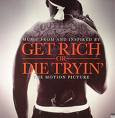Tom Spinks was born in 1948. His father was a Methodist minister in the Louisiana Conference, so Tom lived in Jena, Alexandria and Shreveport while growing up. He attended Woodlawn High School in Shreveport and Louisiana Tech University in Ruston. Tom was Terry Bradshaw's primary pass receiver during those years, and he was honorably mentioned on several All-American teams while in college. He was drafted by the Minnesota Vikings. The next year, while playing with the Pittsburgh Steelers, he sustained a torn ACL knee injury, and his football career came to an end.
In 1978, at age 30, and with no prior knowledge of the publishing industry, Tom started a newspaper on the Steelers called The Pittsburgh Steelers Weekly with a college friend, Bennie Thornell. Within two years, they were also publishing The Denver Broncos Weekly, The New Orleans Saints Weekly, The University of Pittsburgh Panthers Weekly, The West Virginia Mountaineers Weekly and The University of Arkansas Razorbacks Weekly. All of these papers were eventually sold to one buyer.
In 1985, without any prior knowledge of the accounting industry, Tom started a company called National Business Accounting Associates. Within three years, he had over 2,000 accountants all over the country as clients, and he taught them how to secure new business. This business was also sold to a national firm in 1992.
In 1993, with only eight months of experience as a distributor in the multi-level marketing (MLM) industry, Tom started his own company. Within five years, he had more than 80,000 distributors in over 100 countries. That company was sold in 2002.
Following is an interview that Millionaire Blueprints did with Tom Spinks. We feel it will teach others how to do what he did in publishing, accounting and MLM.
Before 1978, between your career with the Steelers and your publishing of The Pittsburgh Steelers Weekly, how did you earn money?
In 1972, I taught Driver’s Education and History to high school students, and starved to death on a take-home salary of about $350 a month. That supported me, my wife and two kids. I worked at an iron and pipe supply house for two years. I sold insurance to small business owners for about a year, and I sold home fire alarms for about two months. It was about this time when we started publishing the The Pittsburgh Steelers Weekly.
Did you enjoy any of those jobs?
Teaching high school was fun, but I hated the other jobs. It all came down to money. I knew I needed to make more money, but my degree was in Education. So I felt stuck. But I also knew that if things were going to be different, I had to make it happen.
Why would you try to publish a newspaper without having any publishing experience?
I had nothing to lose. I had to do something and couldn’t imagine finding another job I hated just to get a paycheck. I had a wife and children to take care of, but it was mainly because it seemed like an idea that would work.
Just because it seemed like it would work, why did you think you could pull it off?
I’m not that smart, but I know I can copy anything that has already been done and adapt it to my situation.
What do you mean by copy anything?
If you want to start a magazine, a restaurant, a picture frame shop, a camera store, a photography studio, an MLM company, or anything else, find someone who is already doing it in a successful way. Go to them, and tell them you want to open up a business just like theirs, that you think they are the best you have seen, but that you know very little about it. Tell them you would like to ask a million questions about how they started and what got them to the point where they are. They will most likely give you a lot more information if they are in a different city. In that case, they won’t be afraid that they are creating competition for themselves.
Ask them how much money it took, where they got it, how they got it, who their suppliers are, etc., etc., etc. People love to talk about themselves and what they have accomplished. They are normally willing to help you if you approach them by saying, “I need your help.”
Walk us through, step by step, how the newspapers became a reality. Be as specific as possible, but use the least amount of words. Teach us how to do what you did.
Bennie Thornell came to my office one day with a copy of The Dallas Cowboys Weekly Magazine. It was newsprint, about the size of The National Enquirer that is on all the grocery store racks today. It was about 32 to 40 pages, and it contained articles and photos of the Cowboys games, articles on different Cowboys and their home and family lives, articles written by the players themselves, articles written by Coach Tom Landry, and things like this. These were articles that would never appear in the daily newspaper. It was quality printed in full color. This particular issue noted that The Dallas Cowboys Weekly Magazine had over 100,000 subscribers, and that the cost of a year’s subscription was $20.
-





No comments:
Post a Comment